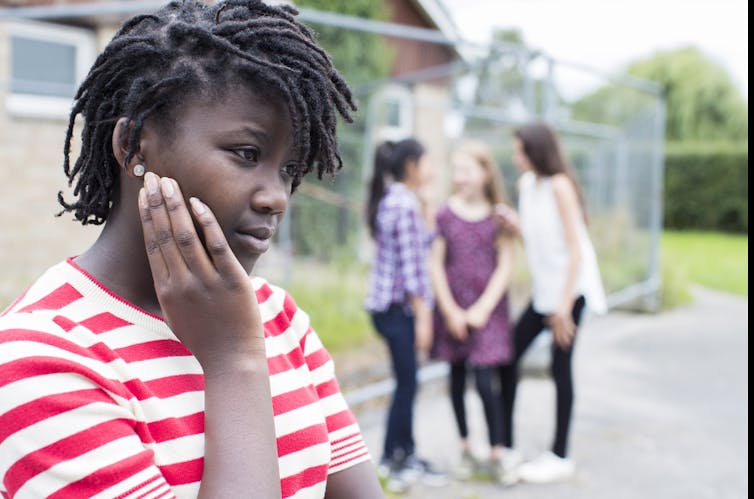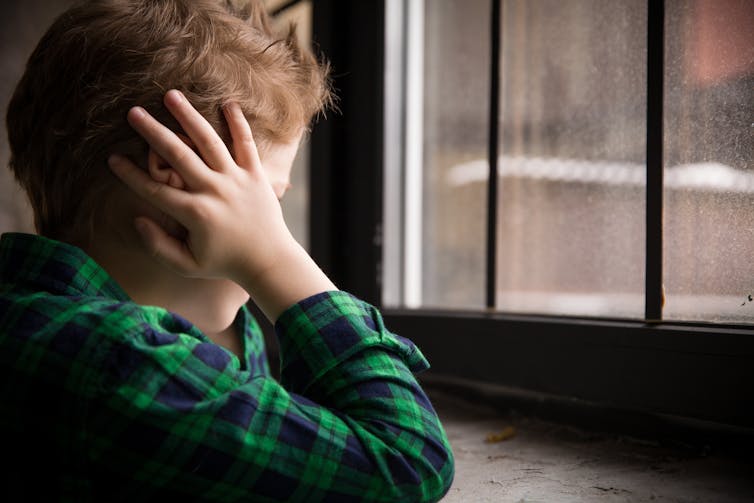What schools can do to reduce the risk that teachers and other educators will sexually abuse children
- Written by David Finkelhor, Professor of Sociology, University of New Hampshire
There’s no shortage of reports about American teachers and other school staff getting arrested for allegedly sexually abusing one or more children.
For example, a high school volleyball coach and algebra teacher in Oklahoma[1] was arrested for first-degree rape in January after she and a former female teacher in the same school district allegedly had a threesome with an 18-year-old male student. A 33-year-old special education teacher in Chicago[2] was arrested in February for having sex with an eighth grader, a two-month relationship documented with 12,000 text messages and and cellphone calls. The nation’s oldest school for the deaf[3] is facing dozens of sexual abuse allegations related to its former students who say they suffered at the hands of school staff for more than three decades.
These disturbing incidents alarm parents, students and everyone concerned about school safety. Yet no federal agency systematically collects national statistics about the problem. Even unofficial estimates, based on news stories or teacher license revocations are scarce. Some of them, including estimates from more than 10 years ago, have found from 361[4] to about 500 known cases per year[5].
As someone who gathers and tracks statistics on sexual abuse[6], I’m certain that the true number is larger since so much of the problem goes unreported[7]. But because these offenses involve trained professionals supervised by other trained administrators, I also believe that schools are well-equipped to take steps[8] to better protect students with prevention measures that aren’t as widespread as they should be.
 Victims can be young or old but the average age is 15.
Daisy Daisy/Shutterstock.com[9]
Victims can be young or old but the average age is 15.
Daisy Daisy/Shutterstock.com[9]
A wide range of abusive acts
Sexual abuse in schools, as in other settings, is diverse in its dynamics. It can range from forcible assaults, unwanted groping, inappropriate propositions[10] and seduction, to the solicitation and exchange of sexual images and video clips. Besides being crimes, they violate the professional responsibilities of teachers and other educators, and undermine the trust that community places in the institution.
An estimated two-thirds of all cases[11] of educator sexual abuse target high school students, a quarter of them middle schoolers and most of the rest children who are in elementary schools. The average age of victims is 15[12].
About 60% of the victims of sexual abuse by educators are girls[13] and 75% of the educators who sexually abuse children are men[14].
Regardless of their gender or job, the educators who sexually abuse kids are not always the stereotypical career predators who take the job to access victims. Some show[15] no sign of being anything besides ordinary people dealing with predictable life crises, depressive episodes and failing marriages.
Educator sexual abuse, because it involves trusted and often revered professionals, can create disbelief and division in whole communities, and a legacy of trauma among victims and their families, as well as their colleagues[16].
 Most of these crimes go unreported.
goodmoments/Shutterstock.com[17]
Most of these crimes go unreported.
goodmoments/Shutterstock.com[17]
4 steps schools can take
Here are some best practices schools can adopt to crack down on child sexual abuse.
1. Comply with the reporting laws.
No teacher should escape from credible allegations of child sexual abuse with a quiet resignation[18] and, as can happen, a letter of recommendation – leaving them free to keep working elsewhere[19] with kids and teens. Federally required laws in every state[20] mandate all teachers and school officials to report even suspected child abuse. The only appropriate response is the filing of a police report and, if confirmed, a career-ending termination. At the same time, while background and reference checks can help make sure that people with past problems don’t get hired in the first place, only 10% of all arrests for sexual abuse of any kind entails someone with a prior record[21]. Among educator abusers that rate is probably even lower, making it a mistake rely too exclusively on criminal background record checks.
2. Establish and enforce rules, offer training and provide reminders about all high-risk situations.
Students should never be alone with a teacher or coach in the staff member’s home or car and protocols must be followed during field trips and in locker rooms. Clear policies should apply to all interactions with children on social media. These bright red lines are needed[22] both to flag the dangers, and expose those who are being cavalier about them.
3. Talk frankly to students and faculty about the problem and especially about the responsibility of bystanders.
Even when students and faculty are aware[23] of suspicious behaviors or patterns, very often they don’t speak up in a way that might protect a victim or root out an abuser. Whether it’s because they don’t think it is their business or they are afraid of alienating their friends or colleagues, everyone can become a good bystander[24] empowered and motivated to act.
4. Ensure that educators get help building their self-management skills.
The ability of all school staff members to restrain their own behavior can be reinforced by training[25], in much the same way that psychotherapists have traditionally been taught to avoid unprofessional entanglements with their clients[26].
 Schools should report all suspected incidents of child sexual abuse to the authorities.
Sabphoto[27]
Schools should report all suspected incidents of child sexual abuse to the authorities.
Sabphoto[27]
Teachers also protect kids
To be sure, reports about educators who sexually abuse kids can overshadow the truly beneficial role that so many teachers and other school staff play in helping students avoid mistreatment in general.
Teachers are the professionals who identify and report the most abused children[28] to child protection authorities of any professionals, topping doctors, hospitals, police and social service agencies. Because they are constantly in contact with children, they are the people who are most likely to notice the bruises, the poor hygiene, the dejection and unexplained absences that can be tell-tale signs of mistreatment of all kinds – including sexual abuse.
And other students, not teachers, are responsible for close to three-quarters[29] of all the incidents of sexual abuse and harassment that occur in schools.
I’m encouraged that many public[30] and private schools are strengthening their codes of conduct[31] and taking other steps to crack down on abusers. But much more still needs to be done.
[Deep knowledge, daily. Sign up for The Conversation’s newsletter[32].]
References
- ^ volleyball coach and algebra teacher in Oklahoma (www.tulsaworld.com)
- ^ special education teacher in Chicago (www.chicagotribune.com)
- ^ oldest school for the deaf (www.nytimes.com)
- ^ from 361 (doi.org)
- ^ 500 known cases per year (www.cbsnews.com)
- ^ gathers and tracks statistics on sexual abuse (scholar.google.com)
- ^ goes unreported (scholars.unh.edu)
- ^ schools are well-equipped to take steps (doi.org)
- ^ Daisy Daisy/Shutterstock.com (www.shutterstock.com)
- ^ forcible assaults, unwanted groping, inappropriate propositions (doi.org)
- ^ estimated two-thirds of all cases (doi.org)
- ^ average age of victims is 15 (doi.org)
- ^ 60% of the victims of sexual abuse by educators are girls (doi.org)
- ^ are men (doi.org)
- ^ Some show (doi.org)
- ^ victims and their families, as well as their colleagues (doi.org)
- ^ goodmoments/Shutterstock.com (www.shutterstock.com)
- ^ quiet resignation (abcnews.go.com)
- ^ them free to keep working elsewhere (abcnews.go.com)
- ^ Federally required laws in every state (www.childwelfare.gov)
- ^ someone with a prior record (www.taylorfrancis.com)
- ^ bright red lines are needed (www.cdc.gov)
- ^ students and faculty are aware (doi.org)
- ^ become a good bystander (theconversation.com)
- ^ reinforced by training (www.nais.org)
- ^ avoid unprofessional entanglements with their clients (doi.org)
- ^ Sabphoto (www.shutterstock.com)
- ^ report the most abused children (www.nis4.org)
- ^ close to three-quarters (doi.org)
- ^ many public (doi.org)
- ^ strengthening their codes of conduct (www.nais.org)
- ^ Sign up for The Conversation’s newsletter (theconversation.com)
Authors: David Finkelhor, Professor of Sociology, University of New Hampshire

